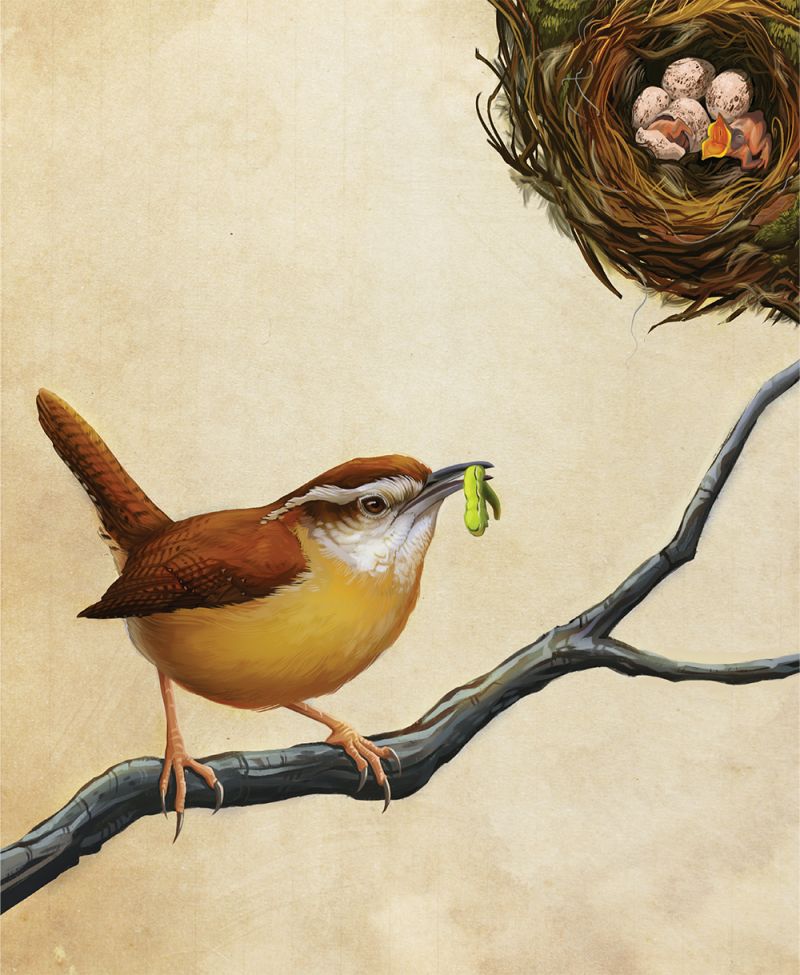
Loyal Lovebirds - Studies show that Carolina wrens tend to choose mates, with whom they generally pair for life, according to like size (they can grow as long as five and a half inches, with an 11.4-inch wingspan). Couples forage and move around their territory together, aggressively scolding away intruders.
High-Tailing It - Eighteenth-century naturalist John James Audubon wrote of the creature, “Its tail is almost constantly erect.” Indeed, the distinctive “tail-up” position and the white “eyebrow” stripe that runs above each peeper make these birds easy to recognize.
Hop To It - Primarily ground feeders, the animal uses a distinctive ”hop-hop” motion while foraging for beetles, grasshoppers, spiders, moths, and other bugs—they may even snag a lizard or tree frog on occasion. Want to attract them to your yard? Hang suet feeders.
Feathered Nest - Both male and female work to construct a cup-shaped, domed nest using a variety of materials—from grasses and Spanish moss to pine needles, hair, feathers, and string. With a side entrance, it often features a woven extension rather like a porch or ramp.
Changing Tunes - While females call out when alarmed, only their better halves can employ the signature ”tea-kettle-tea-kettle-tea-kettle-tea!” Boasting one of the loudest songs per volume among all birds, the male cycles among several dozen song variations. According to the Cornell Lab of Ornithology, one Carolina wren sang nearly 3,000 times in a single day.
Coin Star - The Carolina wren is the South Carolina state bird and in 2000 was also chosen to be featured on the back of the state quarter.
Flight Time - This wren lives a long time compared to some of its avian relations—between six and seven years (a house sparrow’s lifespan is half that). Prime predators include blue jays, brown-headed cow birds, hawks, and snakes.